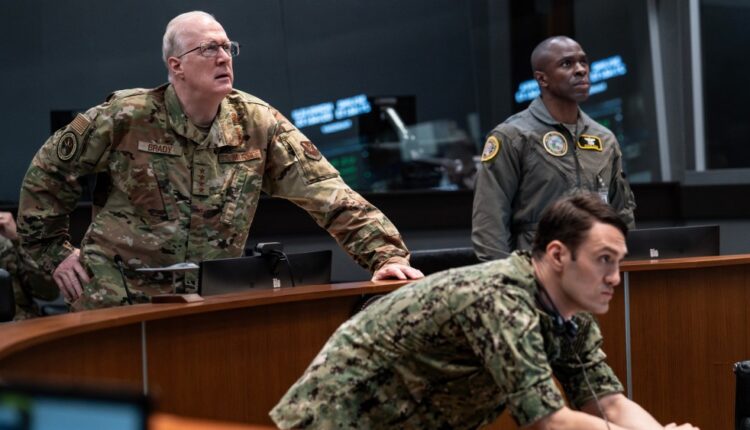Kathryn Bigelow’s “A House of Dynamite” is filled with uneasy tension from start to finish as it follows the immediate threat of a nuclear missile headed straight for the United States. That driving tension and anxiety are largely thanks to the team of artisans, which included composer Volker Bertelmann, editor Kirk Baxter and sound designer Paul Ottosson, who worked closely behind the scenes on their respective crafts to bring it together.
Bigelow’s film, now streaming on Netflix, is divided into three chapters, telling the story from three different perspectives. It all starts in the White House Crisis Room as Captain Olivia Walker (Rebecca Ferguson) works with Major Daniel Gonzalez (Anthony Ramos) and his team at a military base in Alaska. An incoming missile gives them 20 minutes to react and respond accordingly.

Eros Hoagland/Netflix
Ottosson says reading the script was an anxious experience in itself. “As I was reading it, I was really tense, and I was curious to see how it would come together because the structure was different,” he says. Bertelmann knew the score needed development in each chapter. “You need to have some things in your pocket to make the tension higher,” he says. “The opening presents the whole palette of music of what we can expect and what film this will be. You hear those first sounds and know where we are. We are not in a romance. We are in a thriller that will be quite dark in certain areas.” But it took a few attempts at scoring those first moments to get it right. Bertelmann says he worked on shaping the score, pulling back a bit, and then moving into the second chapter.
In cutting those moments, Baxter used the score to track the temperature of his edit, especially as the second chapter begins. Baxter says, “[Bertelmann’s] score peaks at the end of Chapter One, and you reset. You get these clues that come in with little bits of audio.” He adds that the idea was for audiences to wonder what’s going to happen next. Is it the aftermath of the missile impact? Instead, he says, “Those sprinkles start, and then you’re back in panic mode, and it stays there. It’s the score that tells you quickly that you’re in it.”
Ottosson’s approach was to look at the sound by each chapter. “In Chapters One and Two, people are confident and educated in doing something. But of course, things go wrong, and I tried to make it more tumultuous because you can’t control the environment.” Chapter Two resets everything back to the start of the day to show more departments. By the third chapter, the focus shifts back to the Oval Office. This time, Idris Elba, who has only been heard via the black box, is revealed. When the day resets for the last time in the film, his sequence brings humanity to the chaos.
Baxter says, “In the first chapter, we stayed with Rebecca and made Volker’s music the focus.” By the third chapter, which switches to the President’s point of view, it was about the human experience and “one man’s decision. Silence and Volker’s music are really what make that work so great. Having the chaos in the beginning gives you great appreciation for the delicate human factor in Chapter Three.”
The decision not to reveal him earlier was always the intention. “I leaned into the black square by giving it a bunch of screen time,” says Baxter. “Especially in that second chapter when it’s just sitting and they’re waiting for answers. The shots just hold on it, and it’s just silence. It’s like looking down a well. It builds the anticipation of wanting to meet him and get answers.”

The final chapter really dives into the emotional state of mind of the President. He’s the last man left to make the decision. “He also has to deal with human problems, and there are a lot of things not working that make it so emotional,” explains Baxter. While a lot of the story was on the page and scripted by screenwriter Noah Oppenheim, some moments came together in the edit. One example was in that third chapter the President had a phone call with Russia. “It wasn’t written to be on during all of that because we had experienced it previously. On the page, you would go, ‘We don’t need to hear that entire conversation again.’ But in the President’s journey, there’s a joy in re-experiencing it on his face, and it amps up all of the tension of the ‘I need a minute,’ and then you go to Africa.”
Suddenly, there were wide shots of his wife on safari with Ottosson’s sounds of elephants. He says, “It sort of applies this pressure to that scene, you know, as well as all of humanity, of just wanting to have a connection between people.”
The artisans also had access to a military advisor, Dan Karbler, who was accessible at all times. Says Ottosson who relied on Karbler’s advise says, “It was about staying true to what could happen in these rooms and situations. It was never about a cool sound what they felt about how it sounded. It was ‘What would you feel in this situation and what would that sound like?’”


